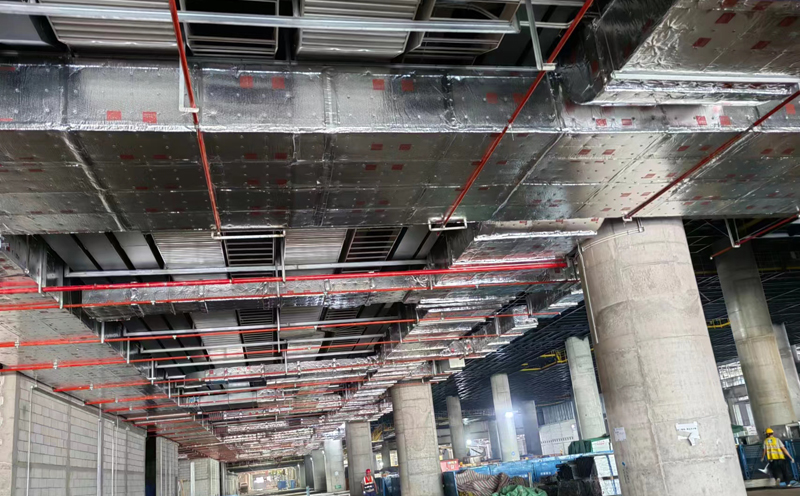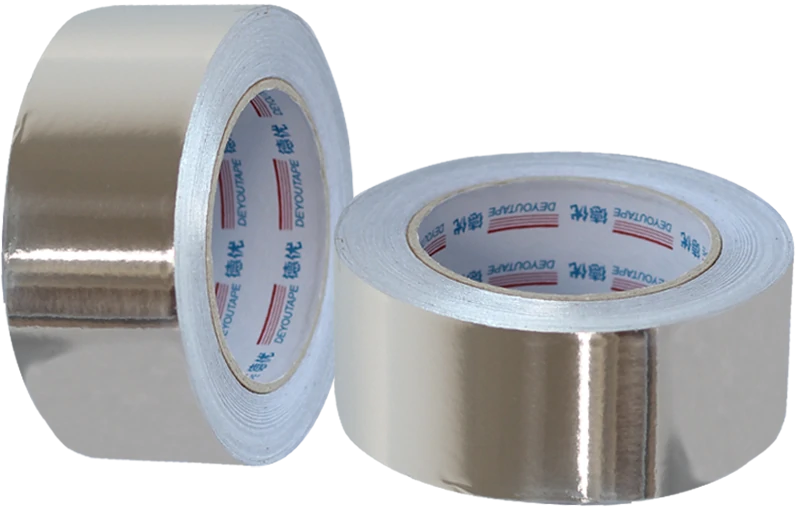Aluminum Foil Tape is a versatile adhesive tape that is made of aluminum backing material and a strong adhesive layer. It is commonly used for insulation, sealing, and duct work applications due to its high durability and resistance to moisture, heat, and chemicals.
Foil tape uses in HVAC ductwork
Aluminum foil tape can be a valuable tool for addressing several common HVAC ductwork issues. Here are some of the most frequent problems it can help solve:
Ductwork Seams and Joints
Gaps and Separations: Foil tape can effectively seal gaps and separations between duct sections, preventing air leakage.
Loose Connections: It can be used to reinforce loose connections at ductwork joints, ensuring a tight seal.
Ductwork Holes and Tears
Small Punctures: Foil tape can be applied to patch small holes or tears in ductwork, preventing air loss.
Ductboard Damage: It can be used to reinforce damaged ductboard sections before applying a more permanent sealant.
Ductwork Connections to Registers and Grilles
Loose Connections: Foil tape can help secure connections between ducts and registers or grilles, preventing air leaks.
Ductwork Passing Through Walls and Floors
Gaps and Holes: Foil tape can be used to seal gaps around ductwork that passes through walls or floors, preventing air leakage.
Benefits of using foil tape for ductwork sealing
Sealing your HVAC ducts with aluminum foil tape can offer several benefits:
Improved Energy Efficiency
Reduces air leakage: Sealing ductwork with foil tape helps prevent conditioned air from escaping through leaks and gaps. This improves the efficiency of your HVAC system, leading to lower energy bills.
Prevents heat gain/loss: The reflective properties of aluminum foil can help minimize heat transfer through the ductwork, further enhancing energy efficiency.
Enhanced Indoor Air Quality
Prevents dust and allergens: Leaky ducts can allow dust, allergens, and other contaminants to enter the duct system and circulate throughout your home. Sealing the ducts helps prevent these particles from entering, improving indoor air quality and reducing potential health issues.
Quieter HVAC System
Reduces noise: Sealing ductwork can help reduce noise levels by minimizing air turbulence and vibrations that can occur through leaks and gaps.
Enhanced comfort: Properly sealed ducts ensure that conditioned air is distributed evenly throughout your home. This helps maintain consistent temperatures in different rooms, providing better comfort for occupants.
Potential Cost Savings
Lower energy bills: By improving the efficiency of your HVAC system, you can potentially save money on heating and cooling costs.
Reduced wear and tear: A properly sealed duct system can reduce strain on your HVAC equipment, extending its lifespan and potentially saving money on repairs.
Easy Application
DIY-friendly: Aluminum foil tape is relatively easy to apply, making it a potential DIY project.
How to Use Foil Tape
Sealing HVAC ducts with aluminum foil tape is a common practice to prevent air leaks and improve efficiency. Here are some steps you can follow:
1. Start by inspecting the ducts for any existing leaks or damage. Look for gaps, holes, or loose connections between the duct sections.
2. Clean the surface of the duct where the tape will be applied. Use a clean cloth to wipe away any dust, debris, or oil that may be present.
3. Cut a piece of aluminum foil tape to the desired length. Make sure the tape is at least 2 inches wider than the area to be sealed.
4. Peel off the paper backing from the tape, and carefully apply it over the area to be sealed. Press down firmly on the edges of the tape to ensure a tight seal.
5. Repeat the process for any other areas that require sealing.
6. Once all the areas have been sealed, run your hand along the tape to ensure it is securely adhered to the duct surface.
7. Test the effectiveness of the seal by turning on the HVAC system and checking for any air leaks around the sealed areas.
Remember, aluminum foil tape is designed specifically for sealing HVAC ductwork, and should not be used as a replacement for other types of duct sealing materials such as mastic or duct sealant.


